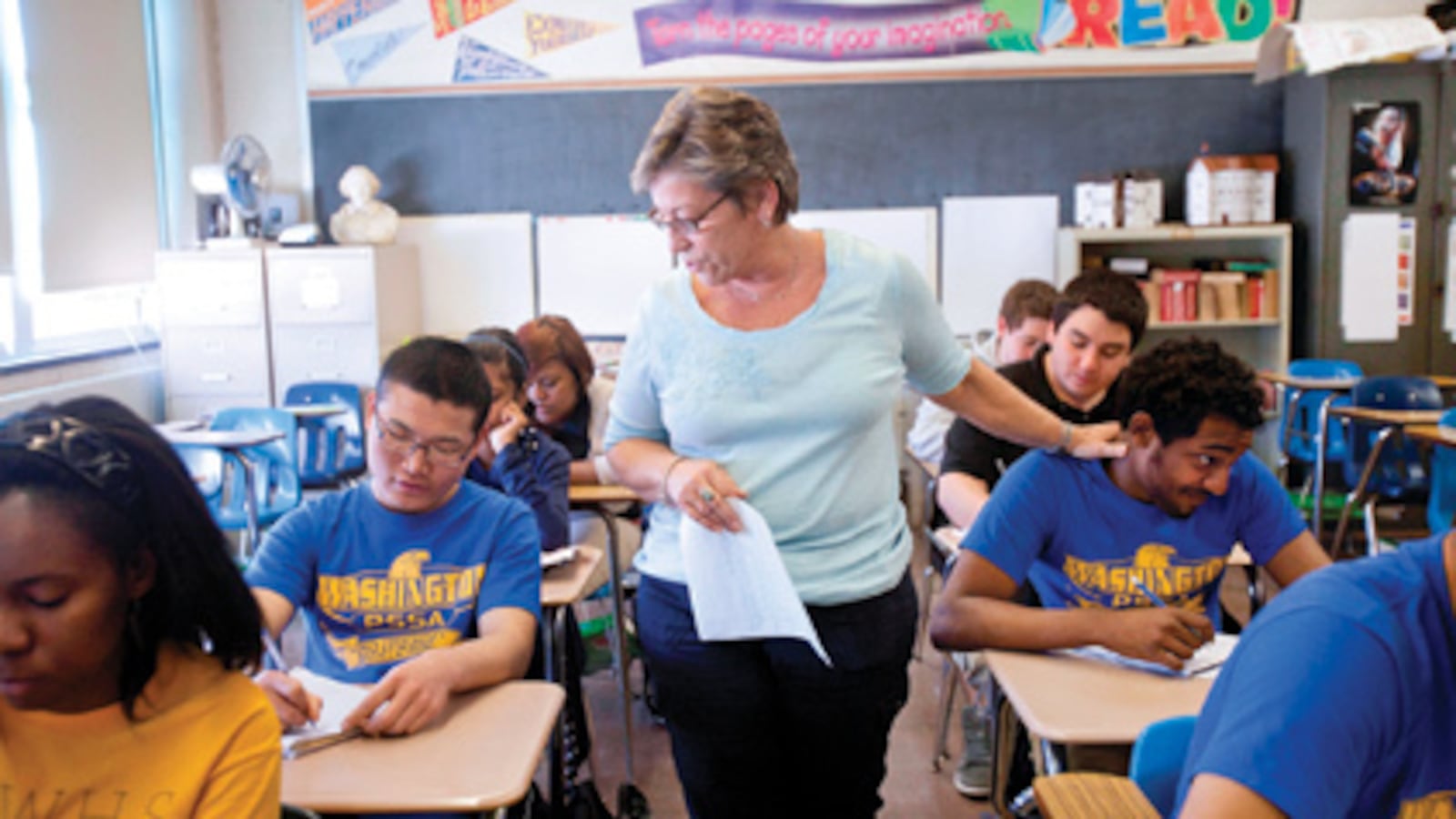This article was originally published in The Notebook. In August 2020, The Notebook became Chalkbeat Philadelphia.
Something in Brenda Wolbransky’s classroom doesn’t feel right.
The 32-year District veteran is pacing the rows of her honors English class at George Washington High, coaxing her students into a conversation about Lord of the Flies, the classic tale of British schoolboys who get trapped on an island and descend into anarchy.
Most of the students are attentive. But the discussion feels rushed. A young man excitedly connects the characters in the book to his own friends. Wolbransky perks up, hesitates, then reluctantly steers the conversation back onto its planned course.
That’s life with the District’s highly structured curriculum, she laments.
"It has stifled creativity," says Wolbransky.
For years, even teachers at relatively successful District schools like Washington have been told what to teach, when to teach it, and sometimes even how it should be taught. At struggling schools, teachers must read to their students from widely hated scripts. Proponents maintain that standardization is necessary in a district with high student mobility and wide disparities in teacher quality and experience.
But now, that’s changing.
With the District awash in red ink, "decentralization" and "autonomy" are the new buzzwords. New Chief Academic Officer Penny Nixon is overseeing a reorganization to give schools more flexibility.
Pennsylvania has also signed onto the new Common Core State Standards. A week with one of Wolbransky’s students, senior Zach Morales, sheds light on this national effort to change the amount and quality of what students read.
Many hope that the creative, engaging instruction now occurring on the margins will be able to flourish.
Wolbransky just wants to make her classroom feel right again.
Years ago, she taught Lord of the Flies in a multidisciplinary unit. Students in small groups formed their own "islands" and used the book as a launching pad for everything from mapmaking to essays on power dynamics in their own lives. At the end, they pulled everything together in posters.
Wolbransky still keeps her favorites on top of an old filing cabinet in the back of her room.
Pulling one down, she smiles at the reminder of what’s possible.
"I save them," she says, "in case I can ever do this again."


